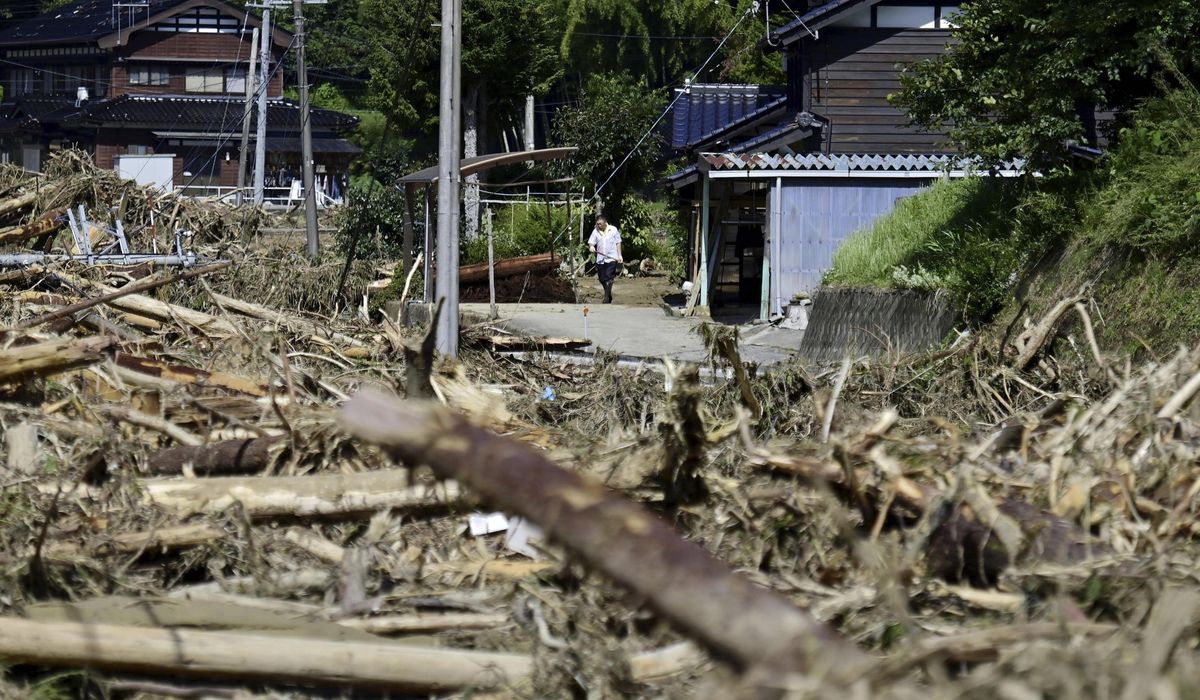


SEOUL, South Korea — Is Japan on the brink of disaster?
The island nation, which sits on the Pacific’s seismically hyperactive “Ring of Fire,” has survived attempted Mongolian invasion, civil wars, atomic bombings and the (fictional) rampages of Godzilla.
But some believe it will suffer its greatest-ever catastrophe on Saturday — July 5, 2025.
That is not a reference to U.S. tariffs on Japanese exports, which are set to strike home on July 9.
Rather, it is a reference to a widely reported prediction that on July 5, the Pacific Ocean’s floor will undergo a seismic shift, generating earthquakes and megatsunamis that will dwarf all previous catastrophes.
The source of the rumor? A Japanese manga, or graphic novel, “Watashi ga Mita Mirai” (“The Future I Saw”), an account of dreams by author-artist Ryo Tatsuki.
Her work was published, to minimal public interest, in 1991. Twenty years later, attention surged.
On March 11, 2011, the “Great East Japan Earthquake” and associated tsunamis struck Japan with major devastation.
Some 20,000 people were killed, physical damage costs exceeded $300 billion and a meltdown at the Daichi Nuclear Plant in Fukushima was triggered.
The nation was shocked when it was discovered that the text on the front cover of Ms. Tatsuki’s 1991 book read, “Great Disaster March 2011.”
Her work came under sudden new attention. Some believe she predicted the deaths of rock star Freddie Mercury of Queen and Princess Diana.
A revised edition of “The Future I Saw” published in 2021 became a bestseller. It predicted a “real disaster” would impact Japan in July 2025. The date was subsequently narrowed down to July 5.
According to Japan’s Kyodo News, Ms. Tatsuki has revised her prediction, saying a disaster “may not necessarily happen” on Saturday.
Seismologists poo-poo the predictions, cautioning that accurately forecasting the timing of an earthquake remains virtually impossible.
But a seed of fear had been planted in fertile soil.
Shamans, fortune tellers and feng shui practitioners retain — in defiance of the ultra-modern surroundings of Asia’s high-tech economies — significant influence in the region.
And not everyone is heeding the science.
Multiple Japan-based media report that July bookings on flights to Japan from China, Hong Kong, Thailand and Vietnam have plunged.
Japanese regional governors have complained that scare-mongering is damaging their tourism sectors, the Yomiuri Daily reported last month.
The situation was not helped by news that broke July 1.
On that day, Prime Minister Shigeru Ishiba demanded that national and local authorities work harder to reduce the anticipated death toll – the latest estimates are 280,000, 14 times the body count of 2011’s carnage — from a potential future megaquake.
The government has been preparing for the unthinkable since 2014. Tokyo’s Central Disaster Management Council and local authorities are tasked with upgrading preparations by, for example, upgrading infrastructure resilience.
The megaquake the management council fears would originate in the Nankai Trough, a hundreds-miles long submarine canyon in the Pacific sea floor east of Japan. Per the Asahi Daily, there is an 80% possibility of a Nankai Trough megaquake occurring in the next 30 years.
Ms. Tatsuki’s predicted megaquake would originate in the distant Philippine Sea. However, the Nankai Trough intersects with the Philippine Sea tectonic plate.
Even so, Tokyo’s stock markets were flat on Friday, and residents of Japan who spoke to The Washington Times were hardly quaking.
“Most Japanese are always worried about natural disasters, but the whole July 5 thing is just an urban myth from a comic,” said Ryo Rinata-Yamaguchi, an academic. “The missus and kids are talking about going to the zoo tomorrow. … None of my friends are talking about it.”
“I am totally making fun of it,” said Jake Adelstein, a Tokyo-based American author.
But Mr. Adelstein admitted that he does keep a pre-packed bag, a solar power generator and a first-aid kit handy “in case of an emergency in Tokyo” – and said some Japanese friends are “in full-blown panic mode.”
• Andrew Salmon can be reached at asalmon@washingtontimes.com.
